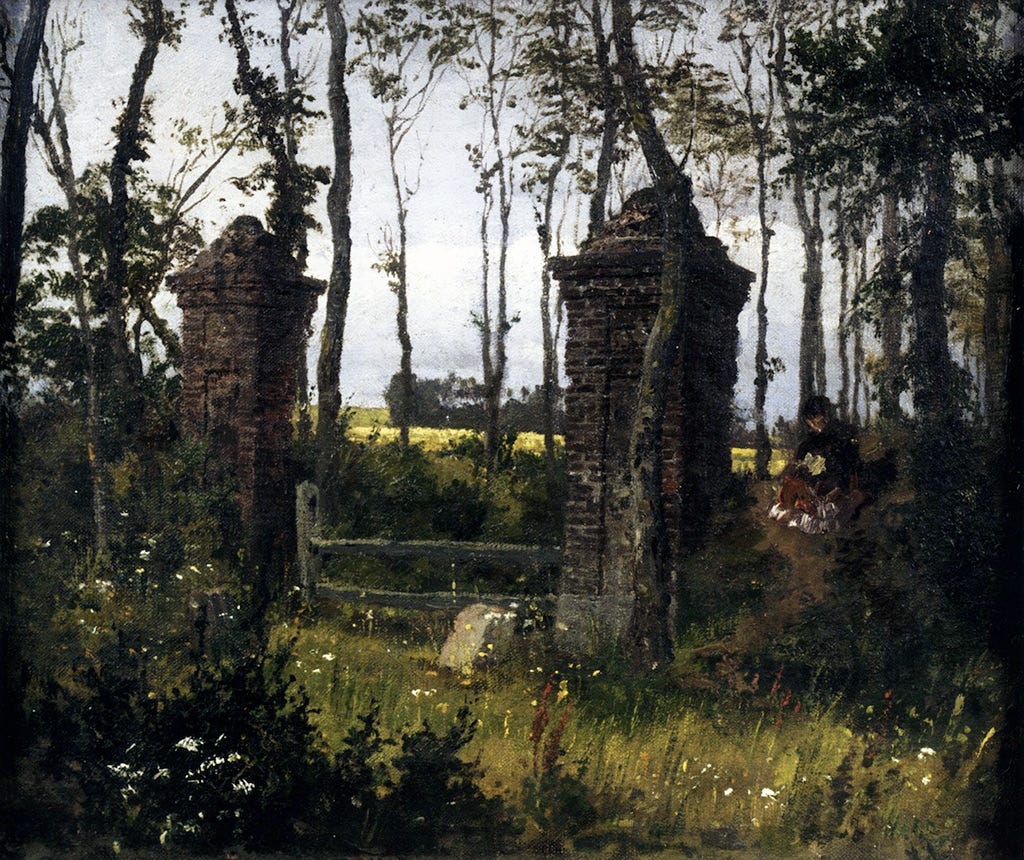Vasily Dmitrievich Polenov was born in 1844 and received an education that combined law and fine arts, initially studying at Saint Petersburg University before transferring to the Imperial Academy of Arts. He showed his promise early by winning prestigious awards for his work, and his travels across Europe introduced him to the landscapes and artistic approaches of the Barbizon school, which influenced the luminous, natural atmosphere that appears in much of his painting.
He became a notable member of the Peredvizhniki movement (the “Wanderers”), a group of Russian realist painters who believed in bringing art directly to the public through traveling exhibitions.
In his landscapes, Polenov typically captured simple, tranquil scenes, often focusing on pastoral settings and the play of natural light over gardens and courtyards. Among his most celebrated canvases are works such as “Moscow Courtyard” and “Grandmother’s Garden,” compositions that convey a gentle lyricism.
He also produced religious-themed art, taking an interest in biblical narratives and working on large-scale projects that depicted scenes from the New Testament. During his career, he taught at the Moscow School of Painting, Sculpture, and Architecture, and he helped foster the talents of a younger generation of Russian artists.
He eventually established an estate near the Oka River, which served both as a personal creative retreat and a cultural site, and he died there in 1927, leaving behind a body of work that had a lasting influence on Russian art.
These are the two paintings we found that he made in Veules-les-Roses in Normandy.






